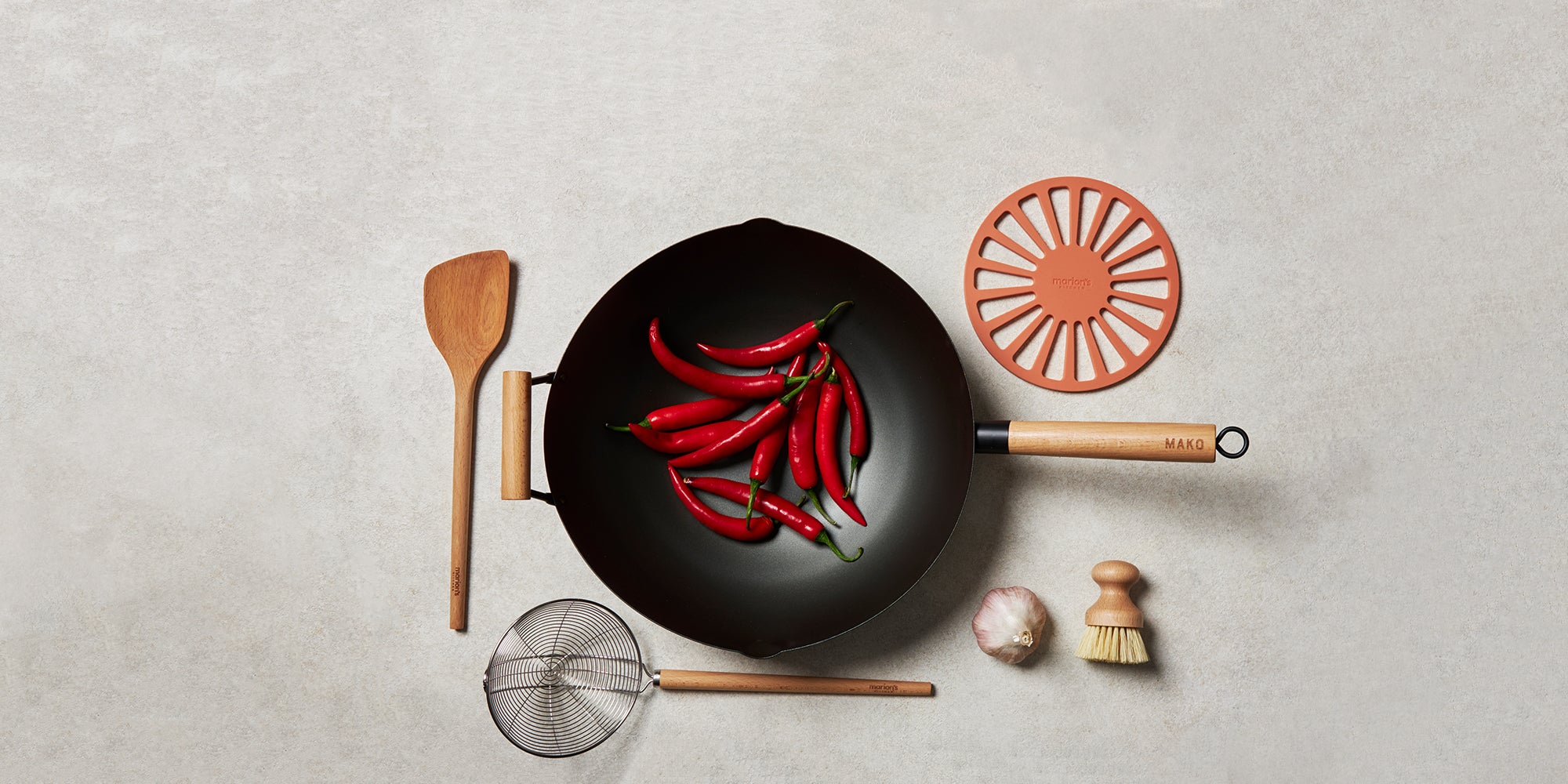
So many wok choices. But which material makes for the best wok?
You’ve done all the right things. You seasoned your new carbon steel wok. Over time, you diligently built up the essential non-stick cooking surface, avoiding scrubbing it clean. It was a thing of beauty. Performed perfectly. You loved it; it was the best wok ever. Then somebody went to town with the pot scourer and just like that, it was all over. The rusting started. Now you’re back to square one. Is there anything more depressing than a rusted wok?
So here you are, on the hunt for the best wok going. You might be tempted to buy a wok with a coated, non-stick surface such as teflon. Or a stainless steel or cast iron one. Carbon steel, the type most experts recommend, can be tricky after all. Which material is best? We adore the carbon steel MAKO wok and we’ll tell you why a bit later, but first let’s look at the different wok options with some pros and cons of each.
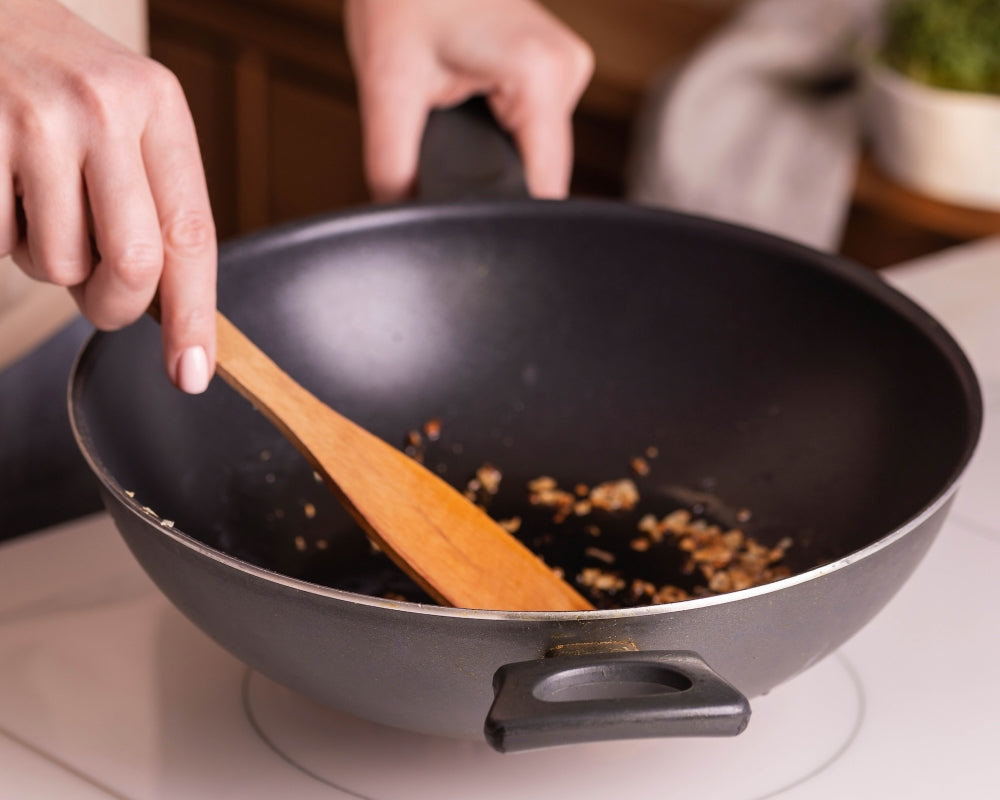
Non-stick woks
Loads of brands make a non-stick wok in a variety of sizes and surfaces. These don’t require seasoning and are easy to clean. But many non-stick surfaces get damaged by the super-high heat needed for stir-frying, and they won’t give you meaningful wok hei either. Non-stick surfaces all succumb to scratching over time, no matter how careful you are. Surface damage means a gradual loss of non-stick properties too, and this also applies to the newer-style ceramic-coated woks. They’re just not up to heavy-duty use.
It’s not recommended you deep-fry in a non-stick wok either. The oil residue builds up over time and you can’t scrub it off. (You shouldn’t hard-scrub non-stick surfaces for any reason). Those made with an aluminium core are not suited for induction cooktops either.
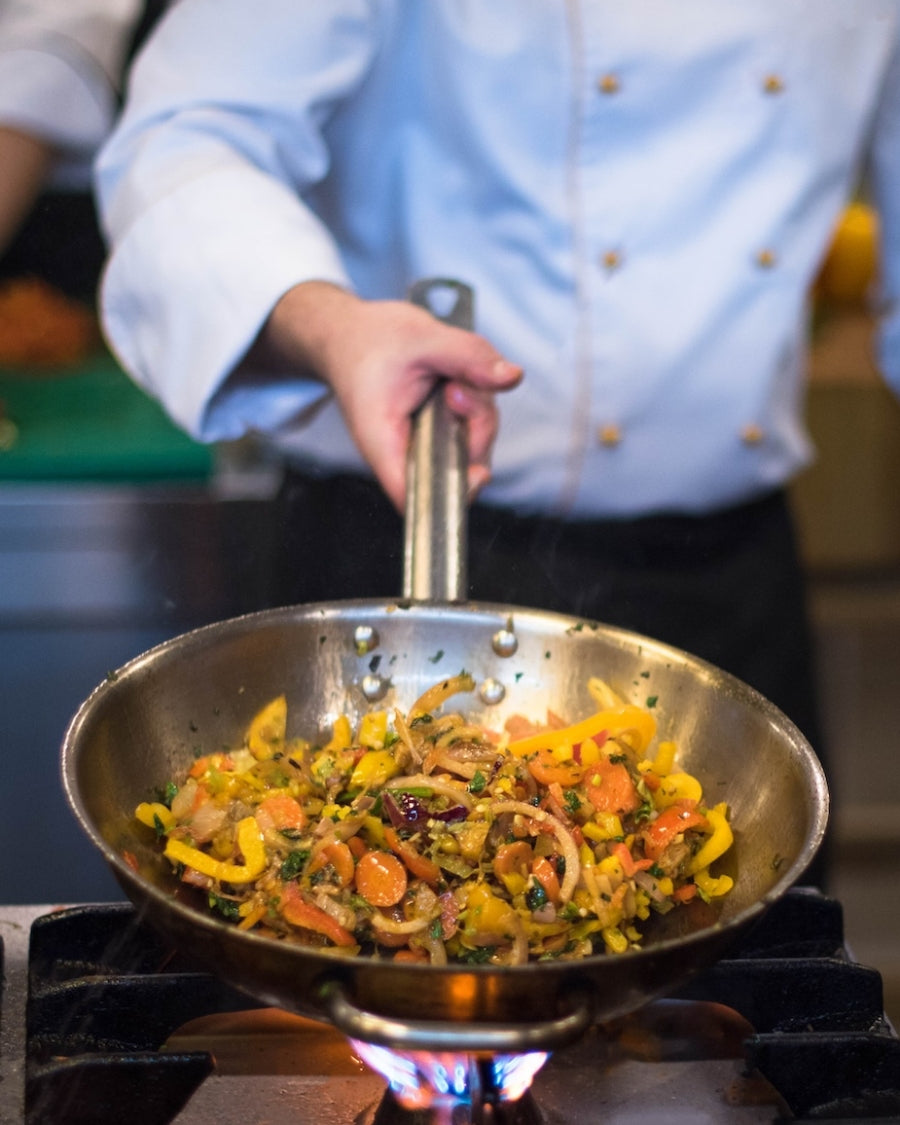
Stainless steel woks
Shiny stainless steel looks SO good. But when it’s wrapped around a wok, it doesn’t stay that way for long. Especially if you stir-fry in one. That’s because stainless steel transmits heat quickly and oil easily burns, developing blackened scorch marks. Which you can only get off with scrubbing. Food sticks easily to stainless steel too. However, it’s good for wet-cooking methods like braising and steaming as it won’t rust afterwards if you don’t instantly wash and dry it. Unlike carbon steel, or cast iron.
Stainless steel woks can go in the dishwasher too; there’s no stress around rusting or non-stick coatings peeling. If you’re tempted by a stainless steel wok, it’s worth shelling out for a 3-ply or 5-ply steel body; these are the highest quality and most durable. Cheaper stainless steel can warp or dent.
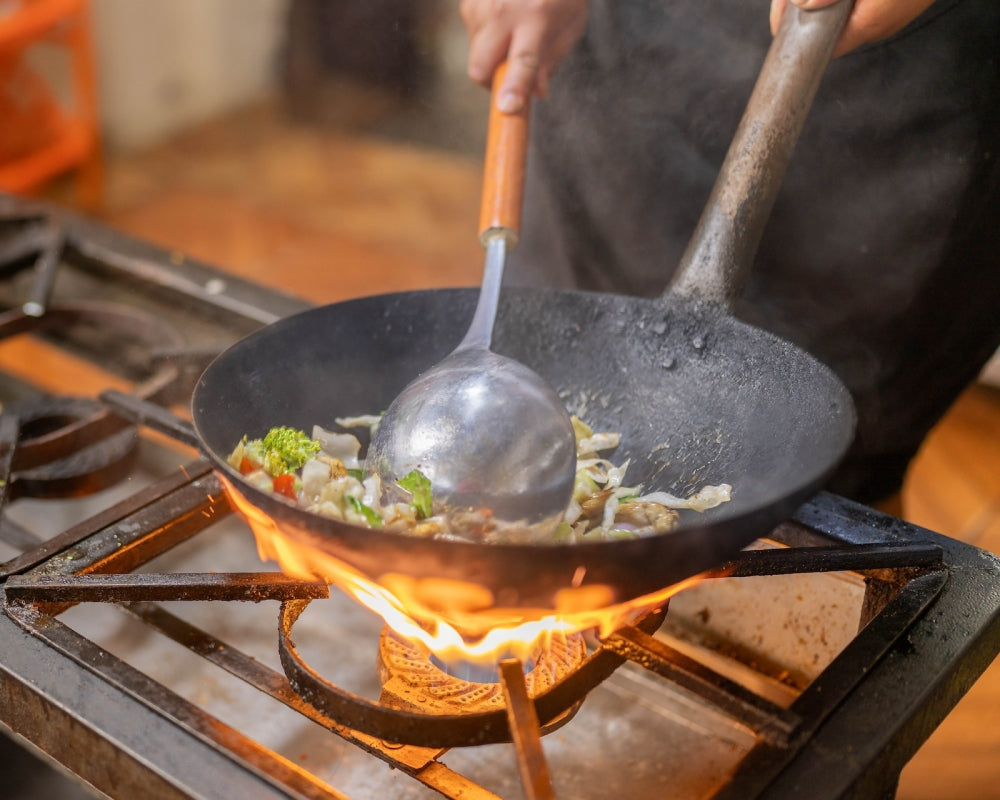
Cast iron woks
Cast iron is highly durable and retains heat well. They’re versatile, suited to most cooking methods, and you can use them on all heat sources. Including induction, if the base is flat. And in the oven. And over a wood fire. Traditional cast iron is thick, slow to heat and heavy; you can’t just pick up a cast iron wok and toss with the flick of a wrist – they’re a beast (although, to be fair, you can buy lightweight versions).
However, a cast iron wok needs vigilant seasoning and constant maintenance to build up a really good surface; it quickly rusts if not properly looked after. For those reasons, cast iron is a mixed pro-con bag.
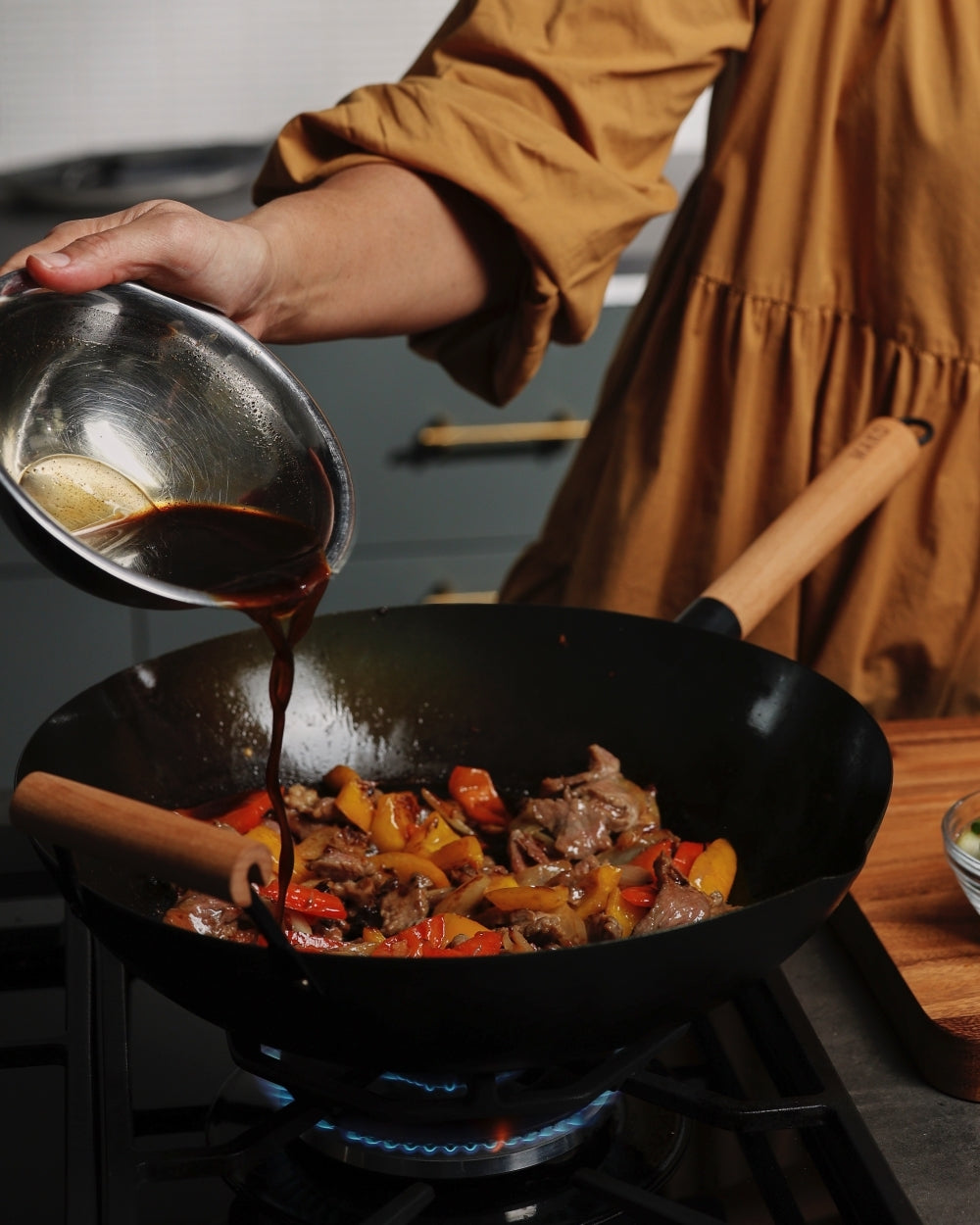
Carbon steel woks
Durable carbon steel is the material of choice for many chefs. That’s because, with its thin construction, it heats quickly and evenly, tolerates very high heat, and is highly responsive to heat changes. A carbon steel wok is light, making it manoeuvrable and easy to manage when you’re cooking. Once you’ve built up a seasoned surface over time, carbon steel becomes non-stick and easy to clean with just a wipe. You can use carbon steel woks for a variety of cooking methods, including deep-frying, shallow frying and stir-frying. But wetter methods (steaming and poaching) require more care so the surface doesn’t rust afterwards.
You can use carbon steel on any type of cooktop (including induction) if it has a flat base. In the con department, proper seasoning is crucial (to protect the surface and so foods won’t stick) and this can be a hassle.
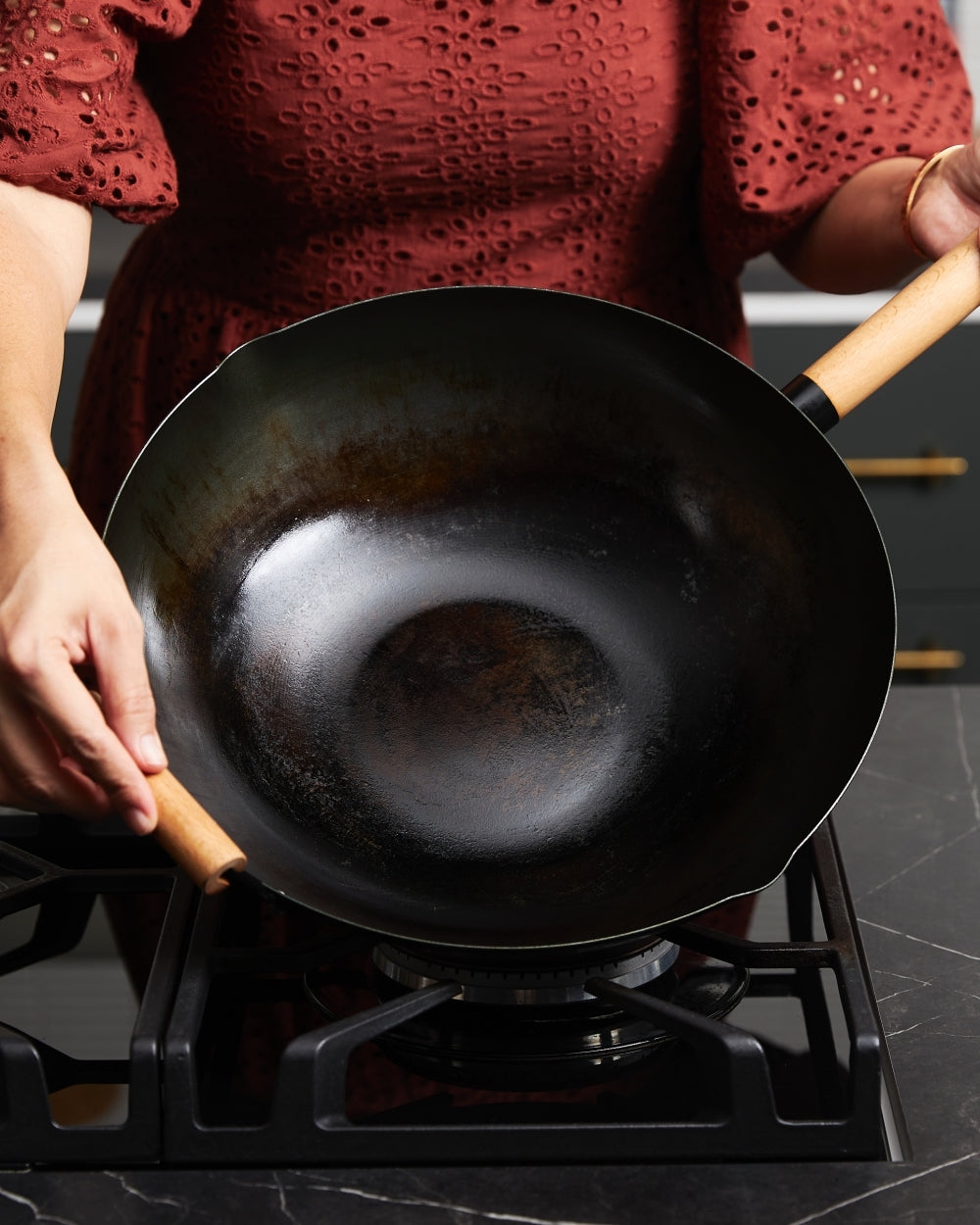
Which brings us to pre-seasoned black carbon steel
When we're assessing pros and cons, pre-seasoned black carbon steel is the absolute best of everything. It’s carbon steel but is pre-seasoned so you can put it to use straightaway. And the seasoned surface keeps building nicely over time.
To speak to the MAKO Black Steel Wok specifically, its flattened base means its suited for any type of cooktop, including induction, and the heat-resistant wooden handles make it practical. So does the little pouring spout that makes saucing a breeze, come serving time.
This is a high-performance wok designed from the ground up to anticipate every need and situation. And to last, too. It’s roomy, easy to clean with the special cleaning brush, and comes with a silicone trivet so you can serve from it at the table.
Whatever the material you choose, wok-cooking is certainly one of the most satisfying cooking methods.
